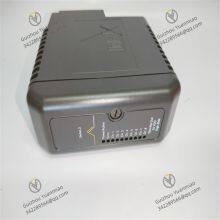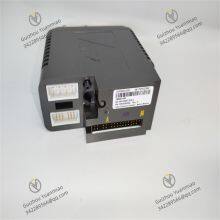Material
Other, Global universal model
Condition
Other, Global universal model
Task
Other, Global universal model
Mathematical Model
Other, Global universal model
Signal
Other, Global universal model
Customized
Non-Customized
Structure
Other, Global universal model
Operating temperature
-40°C to 70°C
Output voltage
24V DC(±10%)
Dimensions
170mm×100mm×32mm
I. Overview
Emerson VE4032S1T2B1 is a high-performance M-series digital input/output hybrid interface card in the DeltaV™ system, specifically designed for complex switching signal interaction in industrial automation scenarios. It can not only accurately collect digital input signals from on-site equipment (such as the switch status of limit switches, buttons, sensors, etc.) but also output digital control signals to drive actuators (such as relays, solenoid valves, indicator lights, etc.), realizing the monitoring and control of discrete events in the production process.
With its redundant design and high reliability, this interface card is widely used in industries with extremely high requirements for system stability, such as chemical engineering, petroleum, and pharmaceuticals. It is a core component connecting the DeltaV™ control system and on-site discrete equipment, providing solid signal interaction guarantee for the safe and efficient operation of production lines.

II. Technical Parameters
Channel configuration: Includes 16 digital input channels and 8 digital output channels. Both input and output channels adopt independent isolation design to avoid cross-signal interference and ensure the independence and stability of signal transmission.
Input signal parameters: Supports dry contact and wet contact (NPN/PNP type) input. The input voltage range is 24V DC (±10%), the input current is ≤5mA, and the response time is ≤1ms, which can quickly capture the switch status changes of on-site equipment.
Output signal parameters: The output type is relay output. Each output contact has a capacity of 2A@250V AC or 2A@30V DC, supports normally open/normally closed contact configuration, and can directly drive medium and low-power loads without additional power amplification equipment.
Isolation performance: Photoelectric isolation is adopted between input channels and the system, between output channels and the system, and between input and output channels. The isolation voltage is ≥2500V AC (for 1 minute), which has strong anti-electromagnetic interference ability and adapts to the complex electromagnetic environment of industrial sites.
Redundancy capability: Supports 1:1 redundancy architecture. The active and standby cards synchronize the working status in real-time, the fault switching time is ≤50ms, and there is no data loss during the switching process, ensuring the continuity of signal interaction and meeting the high availability requirements of key scenarios.
Power parameters: The working voltage is 24V DC (±10%). The typical power consumption of a single card is ≤6W, and the total power consumption in the redundant state is ≤12W. It is compatible with the standard power module of the DeltaV™ system, simplifying the power supply design.
Environmental adaptability: The operating temperature range is -40°C to 70°C, the storage temperature range is -40°C to 85°C, the relative humidity is 5%-95% (no condensation), and the protection level reaches IP20, which can operate stably in harsh industrial environments such as high temperature, humidity, and heavy dust.
Response time: The input signal response time is ≤1ms, and the output signal action time is ≤5ms, which can quickly respond to on-site status changes and control commands, meeting real-time control needs.
Physical specifications: Adopts a DIN rail-compatible card design, with dimensions of 170mm×100mm×32mm (length × width × height) and a weight of about 250g. It supports hot-swapping, facilitating online maintenance and replacement of the system.
III. Functional Features
Efficient integration of hybrid channels: The hybrid channel design with 16 inputs and 8 outputs can simultaneously meet the status monitoring and control needs of multiple on-site devices, reducing the number of modules used, simplifying system wiring, and lowering integration costs.
Redundancy ensures uninterrupted operation: Through the parallel operation and real-time status monitoring of the active and standby cards, when the active card has abnormalities such as channel failure or communication interruption, it will automatically switch to the standby card, ensuring that signal collection and control output are not interrupted, and improving system reliability.
Wide adaptability for signal interaction: Input channels are compatible with various types of digital signals, and output channels support different load types and contact configurations, which can flexibly connect to various on-site devices without additional adaptation modules, enhancing system compatibility and flexibility.
Enhanced anti-interference and safety: Multiple isolation designs combined with hardware filter circuits effectively resist the impact of electromagnetic interference, surge shocks, etc., reducing signal misjudgment; the output channel has an overcurrent protection function, which can quickly cut off the output when the load is short-circuited, protecting the card and load equipment.
Hot-swapping and convenient configuration: Supports hot-swapping function, allowing direct replacement of the card during system operation without stopping the machine, reducing production interruption time; it can be automatically recognized after being connected to the DeltaV™ system, and channel parameters, redundancy modes, etc. can be configured through configuration software, simplifying the installation and commissioning process.
Comprehensive status monitoring and diagnosis: The card has a built-in status monitoring circuit, which can real-time monitor input/output channel status, power status, number of redundancy switches, etc., and intuitively display them through LED indicators (power, communication, redundancy status, channel status). At the same time, fault information is uploaded to the DeltaV™ system, facilitating quick location and troubleshooting.

IV. Common Faults and Solutions
Input signal acquisition error
Possible causes: Input signal voltage is out of range; poor contact of contacts or broken cables; channel is falsely triggered by electromagnetic interference; hardware failure of the input channel.
Solutions: Check the signal source voltage to ensure it is within the range of 24V DC (±10%); clean the oxide layer of contacts, re-tighten cable connectors, and test cable continuity; keep signal cables away from strong interference sources (such as motors, frequency converters), use shielded cables and ground them at one end; switch the signal to the backup channel, if the acquisition is normal, it is determined that the original channel is faulty, and replace the interface card.
No action of output signal
Possible causes: The output channel is mistakenly set to disabled state; load short circuit triggers output protection; relay contacts are damaged; output cable is broken or the connector is loose.
Solutions: Check the channel enable status in the configuration software and enable the disabled channel; disconnect the load, check for short circuits, and reset the protection after eliminating the short-circuit fault; use a multimeter to check the on-off status of relay contacts, and replace the interface card if damage is confirmed; check the continuity of the output cable and re-tighten the connector.
Frequent redundancy switching
Possible causes: Excessive synchronization clock deviation between active and standby cards; unstable communication links leading to abnormal status synchronization; power supply voltage fluctuation exceeding the allowable range; poor heat dissipation of the card leading to high temperature.
Solutions: Calibrate the synchronization clock of the active and standby cards through the DeltaV™ engineer station; check the communication cable connections, replace aging cables, and ensure the shield is reliably grounded; detect the power supply voltage and replace the regulated power supply module; clean the dust in the card's heat dissipation holes, improve the ventilation conditions of the control cabinet, and ensure the working temperature is ≤70°C.
The card cannot be recognized by the system
Possible causes: The card is not correctly inserted into the slot, resulting in poor contact of the golden fingers; the firmware version is incompatible with the DeltaV™ system version; abnormal power supply; internal circuit failure of the card.
Solutions: Re-plug the card to ensure close contact with the slot; upgrade the card's firmware to a matching version (through Emerson's official tools); check the output voltage of the power module and replace the faulty power supply; if the above operations are ineffective, it is determined to be a hardware fault, and replace with a new card.












































